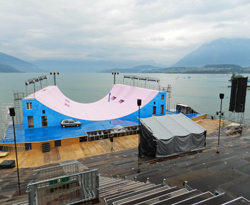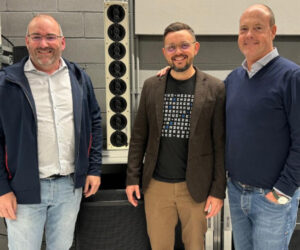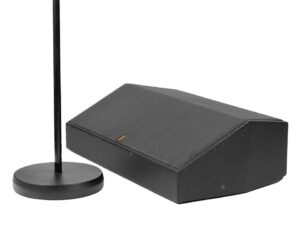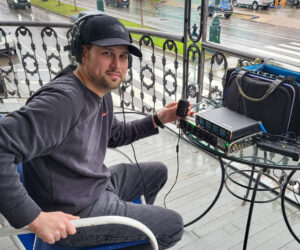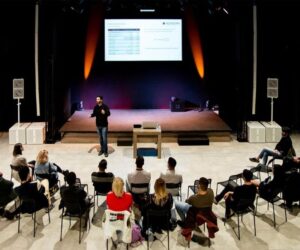Switzerland’s Thunerseespiele this year featured a world first for TiMax when its SOR audio localization was used to track Shakespeare’s Romeo and Juliet performed in a massive half-pipe with a cast of BMX stunt bikers and skateboarders.
Billed locally as Romeo and Julia, the ultra-modernized tale of love and tragedy set amidst the legendary feud between Montagues and Capulets was more Upper West Side than romantic Verona.
One actor noted the peculiarity of spouting classical prose whilst risking life and limb hurtling up an 8 metre high ramp, but such outlandish production concepts are nothing new to Thun’s vast open-air lakeside amphitheatre, which has previously staged lavish productions such as Jesus Christ Superstar, Titanic and Aida.
Since 2009 all have been supported with TiMax source-oriented reinforcement (SOR) sound designs by Thomas Strebel whose experienced audiopool engineers also crew the events, with TiMax system design and programming support from Out Board’s Robin Whittaker.
A TiMax SoundHub audio showcontrol delay-matrix system is controlled by TiMax Tracker automation such that transmitter tags worn by each performer send radar-frequency UWB chirps to sensors around the stage which then send positional information the TiMax SoundHub in real-time. SoundHub then applies especially developed morphing delay algorithms to each performer’s radio mic to ensure that every audience member hears their voice coming from where they actually are on stage.
This is achieved by independently varying the delay relationships between each artist’s radio mic and a distributed speaker system made up of d&b T10’s in the audience on poles and mounted on the stage lip as cross-firing imaging “anchors”, Q7’s embedded in the stage-front behind scrims, and further Q7 anchors mounted in the down-stage far left and right vertical walls of the half-pipe itself.
Thomas Strebel asserts that the high production values espoused by the producers absolutely justifies this detailed approach to vocal reinforcement.
“In a theatre you can work with light to highlight certain people,” he explains “in Thun, the performances will also be held during the day, before nightfall: It is therefore important that you can locate the position of each actor precisely based on their voice. Otherwise it is too difficult to understand what is happening on a large stage. TiMax SoundHub gives us the processing and software tools to do this and TiMax Tracker makes it all fully automatic. Ironically once its working you don’t know its there, but if you switch it off it’s really uncomfortable.”


